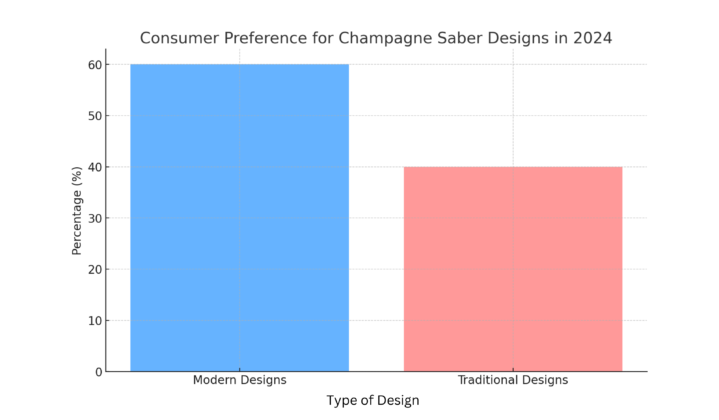How to Choose the Perfect Champagne Saber: A 2025 Guide to Sabering Champagne and Celebrating with Tradition
Selecting a champagne saber is about more than just choosing a tool—it’s about embracing a tradition that adds excitement to every celebration. Whether you’re gathering with close friends or hosting a grand event, the right saber transforms the moment, turning each bottle opening into a spectacle. With so many options available, how do you find the one that suits you best?
Start by considering your experience level, the saber’s craftsmanship, and the handle’s design. A well-balanced saber should feel natural in your grip, seamlessly blending aesthetics with functionality to make every strike both safe and impressive. The ideal champagne saber isn’t just about performance—it reflects your style while honoring the long-standing tradition of sabrage.
Explore our collection at California Champagne Sabers, where expertly crafted designs await. From timeless classics to modern interpretations, our selection ensures you’ll find the perfect saber to make every celebration extraordinary.
Types of Champagne Sabers Available in 2025
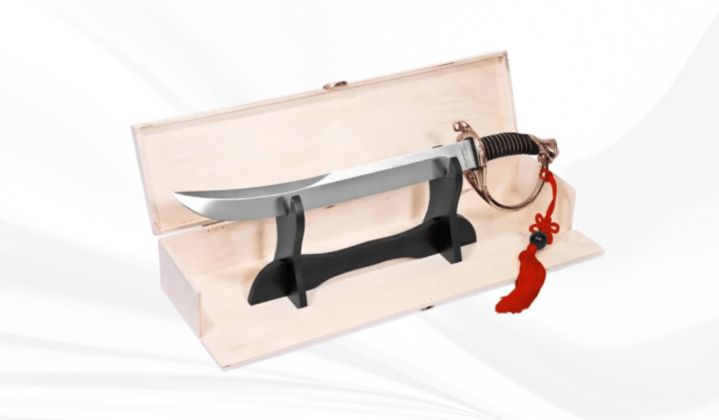
Traditional vs. Modern Designs: How They Compare in Aesthetics and Functionality
In 2025, sommeliers often find themselves choosing between traditional and modern designs of champagne sabers, each offering distinct aesthetics and functionality. Traditional sabers are celebrated for their ornate detailing and classic craftsmanship, which reflect the rich history of sabering. These designs are often favored by sommeliers who value the ceremonial aspects of the tradition, using them in formal settings to enhance the grandeur of the experience.
Modern sabers, meanwhile, cater to the practical needs of contemporary sommeliers, featuring streamlined, minimalist designs that emphasize functionality. These contemporary sabers are often more ergonomic, making them easier to handle, especially for those new to the art of sabering. Despite their modern appeal, they still exude a sense of style, ensuring that the act of sabering remains a visually impressive and memorable part of the champagne experience.
Blade Materials: Stainless Steel, Carbon Steel, and Other Popular Options
The material of the blade is a key factor in the performance and durability of a champagne saber. Stainless steel is the most common choice, known for its resistance to corrosion and ease of maintenance. It provides a good balance between sharpness and flexibility, making it a reliable option for most users. Carbon steel, while less resistant to rust, offers superior sharpness and strength, making it a favorite among experienced saberers who prioritize precision.
Other materials, such as Damascus steel, are also available, offering a unique blend of strength and aesthetic appeal with their distinctive wavy patterns. Each material brings its own advantages, so the choice largely depends on the user’s preference and experience level.
Handle Design: Wood, Metal, and Other Material Choices
The handle of a champagne saber is where form meets function, with a wide range of materials and designs available to suit different tastes and needs. Wooden handles are popular for their classic look and warm, natural feel. They often feature intricate carvings and are preferred by those who value tradition.
Metal handles, including those made from brass or stainless steel, offer a more contemporary and durable option. These handles are typically designed for a secure grip, ensuring control and safety during the sabering process. Additionally, some sabers feature handles made from synthetic materials like resin, which can be molded into ergonomic shapes for added comfort. The choice of handle material and design should align with the user’s aesthetic preferences and intended use.
Size and Weight Considerations: Finding the Right Balance for Your Skill Level
When selecting a champagne saber, size and weight are crucial considerations that can significantly impact the sabering experience. A saber that is too heavy may be difficult to control, especially for beginners, while one that is too light may lack the necessary momentum to cleanly break the bottle. Most sabers are designed to strike a balance, with lengths typically ranging from 12 to 18 inches and weights varying accordingly.
For those new to sabering, a lighter saber with a shorter blade is often recommended, as it offers more control and is easier to handle. Experienced saberers may prefer a heavier, longer blade, which provides more power and a dramatic effect. Ultimately, finding the right balance in size and weight is key to ensuring a safe and enjoyable sabering experience.
Factors to Consider When Choosing a Champagne Saber
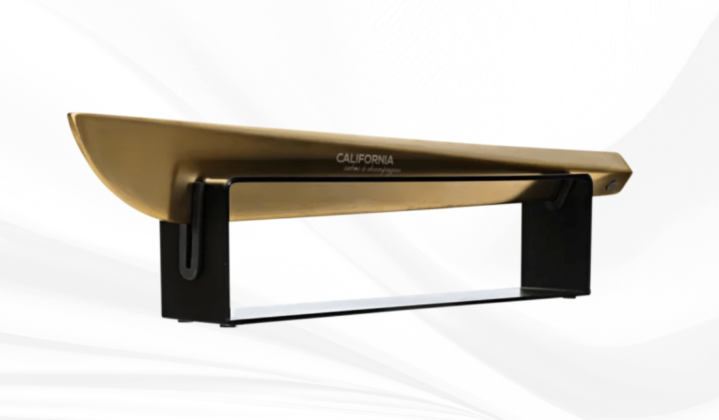
Purpose of Use: Occasional Use vs. Regular Celebration Tool
When selecting a champagne saber, it’s essential to consider how often you’ll be using it. If you plan to saber champagne only on special occasions, a more basic model might suffice—something stylish but not necessarily designed for frequent use.
However, if sabering is a regular part of your celebrations, investing in a high-quality saber with durable materials and superior craftsmanship will pay off in the long run. Frequent users might also appreciate features like ergonomic handles or blades made from premium steel that offer both reliability and longevity.
Skill Level: Beginners vs. Seasoned Saberers
Your experience with sabering should guide your choice of saber. Beginners may benefit from a saber designed with user-friendly features, such as a lighter weight or a shorter blade, which are easier to control and less intimidating. Some sabers are specifically marketed for those new to the tradition, with added safety features and simplified designs.
In contrast, seasoned saberers might prefer a saber that offers more precision and power, with a longer, heavier blade that enhances the dramatic effect. Experienced users often seek out sabers with a reputation for performance, allowing them to execute a flawless saber with confidence.
Safety Features: Guard Designs, Blade Thickness, and Other Safety Considerations
Safety is paramount when choosing a champagne saber, especially given the nature of the activity. Look for sabers with well-designed guards that protect your hand from slipping onto the blade during use. The thickness of the blade also plays a role; thicker blades are generally safer as they provide more control and are less likely to break under pressure. Additionally, some sabers come with blunt blades, which are safer for beginners as they minimize the risk of accidental cuts while still being effective for the sabering technique. Considering these safety features is crucial for ensuring that your sabering experience is both enjoyable and risk-free.
Brand Reputation: Overview of Top Brands and What Sets Them Apart in 2025
Brand reputation can significantly influence your choice of champagne saber, as established brands often bring a guarantee of quality and performance. In 2025, some of the top brands in the market are known for their attention to detail, craftsmanship, and customer satisfaction.
These brands often offer a range of sabers, from entry-level models to high-end, custom-made pieces, each tailored to different needs and preferences. Researching and choosing a saber from a reputable brand can give you peace of mind, knowing that your saber is built to last and perform well in every celebration.
The Role of Craftsmanship in Champagne Sabers
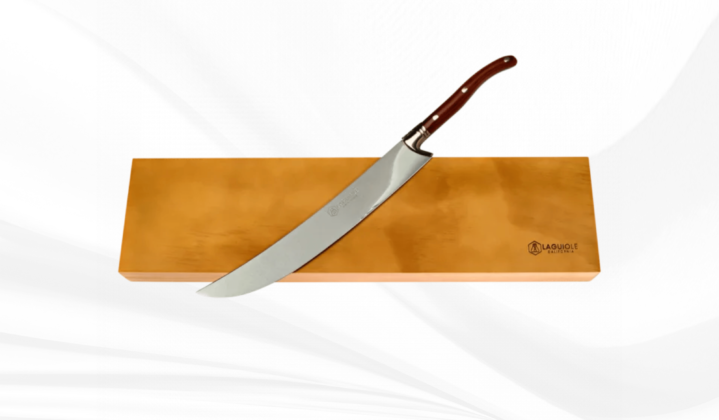
Handcrafted vs. Mass-Produced: What to Look for in Quality
When choosing a champagne saber, the level of craftsmanship can make a significant difference in both the aesthetic appeal and the functionality of the tool. Handcrafted sabers, often produced by skilled artisans, are typically made with a focus on quality and attention to detail that mass-produced options may lack.
These sabers often feature unique touches, such as intricate engravings or custom handles, that reflect the maker’s artistry. In contrast, mass-produced sabers are generally more affordable and widely available, but they might not offer the same level of refinement or durability. When assessing quality, look for consistency in the blade’s finish, the precision of the handle attachment, and the overall balance of the saber.
Attention to Detail: Engravings, Finishes, and Customizations
The finest champagne sabers are distinguished by their attention to detail. Custom engravings can add a personal touch, making the saber not just a tool but a cherished heirloom or gift. The finish of the blade and handle—whether polished to a mirror shine or given a matte texture—can also affect the saber’s appearance and feel.
Some manufacturers offer bespoke services, allowing you to choose materials, designs, and finishes that match your style or the occasion. Such customizations not only enhance the saber’s visual appeal but also contribute to a more personalized and meaningful sabering experience.
The Impact of Craftsmanship on Performance: Does It Make a Difference?
Craftsmanship plays a important role in the performance of a champagne saber. A well-crafted saber is not only beautiful but also functional, providing the right balance, weight, and sharpness needed for a successful saber. Handcrafted sabers, with their superior materials and construction, often offer smoother, more controlled cuts, making the sabering process more reliable and enjoyable.
While mass-produced sabers can certainly get the job done, the precision and care put into a handcrafted saber can elevate the entire experience, ensuring that each bottle opening is as spectacular as it is safe.
How to Properly Care for Your Champagne Saber
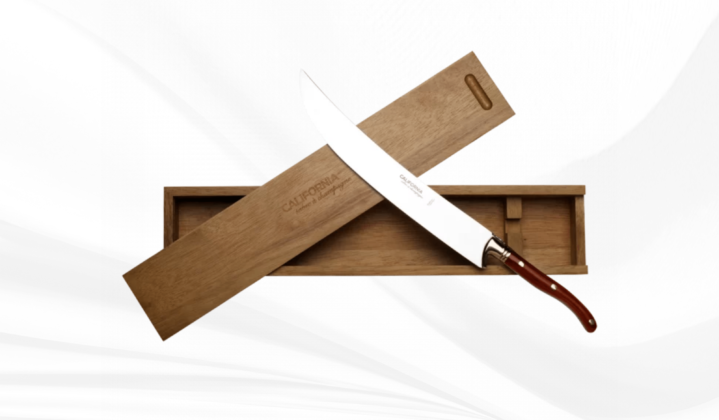
Cleaning and Maintenance: Tips for Keeping Your Saber in Top Condition
Proper care of your champagne saber ensures it remains in top condition for years to come. After each use, it’s important to clean the blade promptly to prevent any residue from damaging the metal. Using warm water, mild soap, and a soft cloth, gently wipe down the blade, taking care to dry it thoroughly to prevent rust. Avoid using harsh chemicals or abrasive materials that could scratch or dull the blade. Regular maintenance, such as applying a light coat of oil to the blade, can also help protect it from corrosion and keep it looking pristine.
Storage Solutions: Display Cases, Wall Mounts, and Protective Sheaths
How you store your champagne saber can greatly affect its longevity and appearance. Many enthusiasts choose to display their sabers in a decorative case or wall mount, which not only protects the saber but also turns it into a conversation piece.
When selecting a storage solution, consider one that offers both protection and style, such as a case with a soft lining or a wall mount with secure fittings. If you prefer to keep your saber stored away, using a protective sheath is essential. This will guard the blade against dust, moisture, and accidental damage, ensuring it stays sharp and ready for your next celebration.
Longevity: How Proper Care Extends the Life and Performance of Your Saber
Taking the time to properly care for your champagne saber will significantly extend its life and maintain its performance. Regular cleaning, careful storage, and occasional maintenance checks will keep your saber in excellent condition, allowing you to use it for years without deterioration in quality.
A well-maintained saber not only retains its sharpness and aesthetic appeal but also ensures that every sabering experience is smooth and effortless. By investing in proper care, you can enjoy the tradition of champagne sabering for many celebrations to come, preserving both the tool and the memories it helps create.
Consumer Preference for Champagne Saber Designs in 2024

In recent years, the design preferences of champagne saber buyers have shifted notably. Market research data from 2024 reveals that 60% of consumers now prefer modern champagne saber designs, which are often sleek, minimalist, and ergonomically tailored to suit contemporary tastes. Meanwhile, 40% of consumers continue to favor traditional designs, characterized by ornate details and a strong connection to the historical roots of sabering.
This preference for modern designs highlights a broader trend where functionality and contemporary aesthetics are increasingly valued by consumers. At the same time, the significant portion of buyers who still choose traditional designs demonstrates the lasting appeal of classic craftsmanship. This balance in consumer preferences suggests that both modern and traditional styles remain relevant, each catering to distinct segments of the market.
The graph illustrates this trend, showing a clear preference for modern designs but also emphasizing the continued importance of traditional styles. This data is valuable for manufacturers and retailers, who can use it to ensure they offer a diverse range of champagne sabers that meet the varied tastes of their customer base.
For a deeper exploration of consumer behavior and trends in luxury goods, you can refer to this research article published in the Journal of Marketing Research.
Celebrating in Style: Making Memories with the Perfect Champagne Saber

Investing in a high-quality champagne saber ensures that you not only carry on a storied tradition but also do so with the confidence that each bottle opening will be as impressive as it is safe. Proper care and maintenance of your saber will keep it in top condition, allowing you to enjoy this unique experience for years to come. As you continue to explore the world of champagne sabering, remember that the right tools and techniques can elevate any celebration into something truly unforgettable.
For those ready to find their ideal champagne saber, explore the extensive collection available at California Champagne Sabers. From timeless classics to innovative designs, our collection offers a range of options that cater to every taste and occasion. Celebrate with confidence and style, knowing you’ve chosen a saber that’s as exceptional as the moments it will help create.
Frequently Asked Questions
1. Is it safe to drink champagne after sabering?
Drinking champagne after sabering is considered safe when the process is executed correctly. The force and technique used in sabering create a clean break at the neck of the bottle, with the pressure inside the bottle pushing out any potential glass shards along with the cork. This natural expulsion helps keep the champagne uncontaminated. However, it’s recommended to inspect the first pour carefully to ensure that no glass fragments remain. To further reduce any risk, you can pour the first glass away from guests and check for clarity before serving.
2. Does champagne need to be cold to saber?
For a successful sabering experience, the champagne must be properly chilled. A cold bottle is crucial because the lower temperature increases the internal pressure, which facilitates a clean break when the saber strikes the glass. Ideally, the champagne should be refrigerated for several hours before sabering, reaching a temperature between 38°F and 45°F (3°C to 7°C). The chill not only helps with the clean break but also ensures the champagne retains its effervescence and flavor profile, making the celebration as enjoyable as possible.
3. Does sabering champagne break the glass?
Yes, sabering does involve breaking the glass, specifically at the neck of the bottle. When performed correctly, the saber’s impact causes the glass to break cleanly along the seam, removing the top of the bottle along with the cork. This technique relies on the internal pressure of the chilled champagne to help create a precise, controlled break. The glass should shatter away from the bottle in a way that leaves the champagne inside uncontaminated. The key to preventing unwanted glass shards is proper technique and ensuring the bottle is adequately chilled before sabering.
4. What is the champagne sword called?
The sword used in the sabering process is referred to as a “champagne saber.” This specialized tool is designed for the specific purpose of opening champagne bottles with a dramatic flourish. Unlike traditional swords, the champagne saber typically has a blunt edge, focusing on the force of the strike rather than cutting through the cork. The design of the saber often reflects a blend of functionality and ceremonial elegance, making it both a tool and a symbol of celebration.
5. Who started sabering champagne?
The tradition of sabering champagne is believed to have originated with the cavalry officers of Napoleon Bonaparte’s army. After their military victories, these officers would celebrate by opening bottles of champagne with their sabers, a gesture that symbolized both their triumph and the luxurious spoils of war. This practice quickly became a popular tradition among the French elite and has since evolved into a ceremonial act enjoyed by champagne enthusiasts around the world. The ritual of sabering has maintained its association with celebration, luxury, and a sense of occasion, making it a timeless tradition that adds flair to any event.

